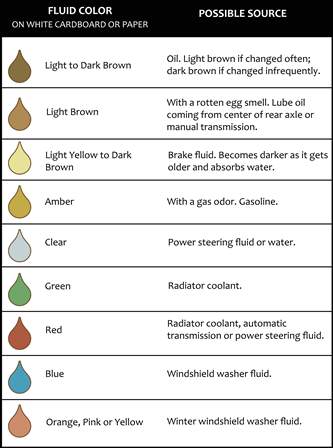Posted on 6/16/2017

‘Tis the Season to Hit the Road Kids are out of school, three-day-weekends are plentiful, and the great outdoors is calling. This summer many motorists will pack their cars, heading out on that long awaited summer vacation. But, before you pull out of the driveway check to see if your vehicle is ready. To keep the fun in your vacation it is best to prepare your Car/Truck/SUV ahead of time, keeping you stress free and relaxed. Protecting your family from unseen circumstances that can endanger your trip or your lives. Whether it’s a trip out of town, to the beach, or just around the corner your friends at Walt’s Auto Service want to help you get ready for your 2017 summer activities with our “Super Summer Vacation Special” coupon. $25.00 off any service or repair of $100 or more. Give us a call to take advantage our “Super Summer Vacation Special!” Please feel free to share this special offer with your friends and fa ... read more
Posted on 4/21/2016

At Walt’s Auto Service we want to celebrate EARTH DAY and every day by sharing with you CAR CARE COUNCILS suggestions to help you be greener for a better and more sustainable environment and keep your car running healthy and green! Drive Green – Recognize that how your drive has a lot to do with fuel economy. Avoid sudden starts and stops and go the speed limit. Jerky and aggressive driving decreases your miles per gallon (MPG) and increases wear and tear on your vehicle. Minimize unnecessary miles by combining errands in one trip. Get a Tune-Up – Regular tune-ups, maintenance and having clean air filters will help your car pollute less and burn less gas. With a proper tune-up, you can save 4% on the cost of gas and up to 40% by replacing a faulty oxygen sensor. Simply changing the car’s air filter can improve efficiency by 10%. Lighten the Load – Get the junk out of the trunk and the stuff out of your ... read more
Posted on 3/30/2016
People who exercise on a regular basis often advise more sedentary individuals to “use it or lose it,” the implication being that the body’s health degenerates with disuse. The same may be said of an automobile. All too many car owners mistakenly believe that their cars need not adhere to regular maintenance schedules because they are used so little. The fact is, however, that the various lubricants found in a car lose their protective qualities with non-use. They are likely to deteriorate by virtue of condensation buildup or accumulations of unburned hydrocarbons, varnish, or acids. These latter contaminants will pit an rust metal if they are not boiled, burned or heated away. Following a regular service schedule, no matter how frequently a car is used, will help prevent wear and mechanical problems. If your car is going to sit idle for a lengthy period of time we can help you with some ideas that will assure its good condition upon your return ... read more
Posted on 2/25/2016

Spot fluid leaks check color chart When was the first time you took a close look at your garage floor or the patch of driveway beneath your car in an effort to spot a fluid leak? This type of informal inspection should be conducted on almost a daily basis. Conscientious car owners who frequently spot check for leaks will more likely be rewarded with a minor repair bill, rather than the more costly complication of fluid loss. A puddle of greenish-yellow or reddish fluid is indicative of loss of engine coolant. Motor oil is usually blackish-brown, while transmission fluid has a red tint. Brake fluid is clear, but its location near the wheels may help identify it. These fluids are all considered to be lubricants, the loss of which compromise a corresponding unit’s functioning efficiency and should be checked out right away. If fluid spots are a common sight on your garage floor or driveway, start fresh with a clean piece of card ... read more
Posted on 1/28/2016
HINT: When the check engine warning light comes on, check the owner’s manual for specific instructions. Because yellow “check engine” warning lights often show up on the instrument panel unaccompanied by any apparent symptoms, drivers may continue to drive their vehicle and blame the incident on glitches in the system. However, this should be examined by an auto technician at the earliest opportunity. The reason is the car’s onboard computer system receives information about the engine and other parts of the car from an array of sensors. If any of these sensors relay information about an abnormality, the “check engine” light will come on and the car computer can compensate. The point is not to ignore the warning to the point where failure develops. Those little lights really do mean something, even if it only means there’s a loose connection somewhere. Don’t be in the dark
Posted on 12/4/2015

Anyone who drives a front wheel or an all wheel drive automobile should be familiar with the function of CV (constant velocity) Joints. Their function is to provide power transfer to the front wheels as well as to allow for steering and suspension movement. Packed in grease and protected with rubber boots, the CV joints should be regularly inspected for leaks and cracks. In the event that the boots deteriorate and begin to leak grease, they will splatter grease on the inside of the wheel and on the suspension. Evidence of this splattering will not be obvious from the outside of the vehicle and must be viewed from underneath. For this reason, it is a good idea to have the CV joints inspected at every oil change or 3,000 to 5,000 miles. Replacing a boot immediately after a leak or crack is found costs a fraction of what it would otherwise cost to replace a CV joint or a complete drive axle. If you hear a repetitive knocking or grinding noise from your car the lik ... read more